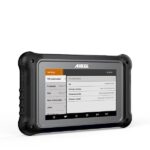Engine swaps can be a thrilling way to boost your vehicle’s performance, but they often bring complexities, especially when mixing On-Board Diagnostics generations. A common question arises when considering installing an older OBD1 engine into a newer OBD2 vehicle: how does this impact emissions and what about the engine harness?
The core issue is that OBD2 vehicles are designed to communicate with OBD2 compliant engines for emission control. Federal regulations mandate that engine installations in light-duty vehicles must maintain or improve emission standards compared to the original configuration. Swapping to an older OBD1 engine can create a mismatch.
One debated workaround involves using an OBD2 ECU temporarily for emissions testing. For instance, in some scenarios, individuals might use a Y7 or Y8 ECU (OBD2) on a Z6 engine (OBD1) along with a crank sensor trick or physically swapping oil pan and pump to accommodate the sensor, purely to pass OBD2 emissions checks. Theoretically, after passing, one might revert to an OBD1 ECU for regular driving.
However, legality is a significant grey area. While federal EPA guidelines exist, enforcement varies considerably at the state level. California, known for stringent emission laws, would likely consider such a modification as tampering. Conversely, states with less strict enforcement might overlook these changes as long as the Check Engine Light (CEL) is off and the OBD2 port provides a reading.
Ultimately, while there may be technical workarounds to interface an OBD1 engine in an OBD2 car for basic OBD2 scanner functionality, it’s crucial to understand the potential legal ramifications and ethical considerations concerning emission standards in your specific region. Consult local regulations and emission testing centers to ensure compliance and avoid future issues.
